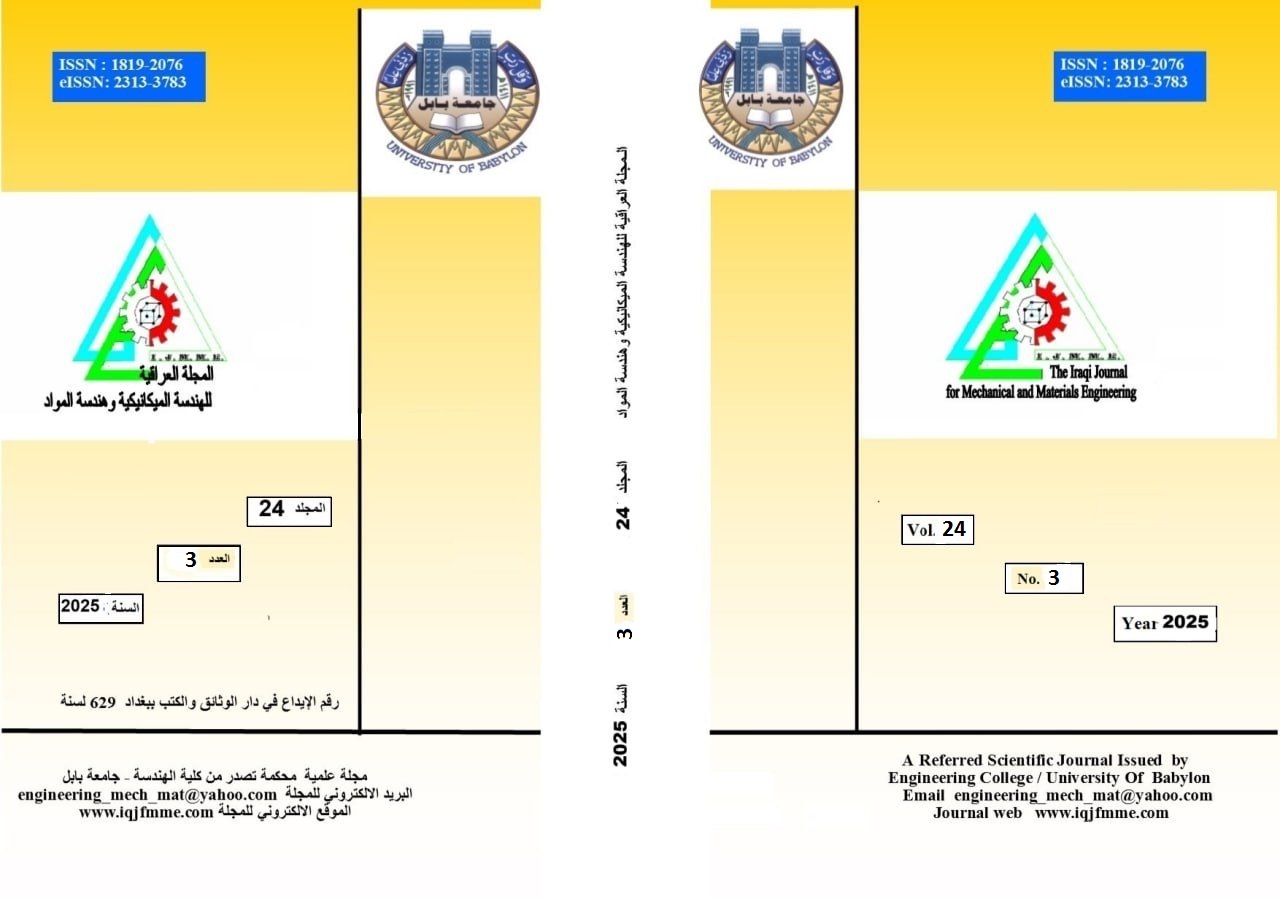STUDY THE RESIDUAL STRESSES IN COMPOSITES MATERIALS USING X-RAY TECHNIQUE
DOI:
https://doi.org/10.32852/jqmf9t22Keywords:
curing temperature, residual stress, X-ray method, carbon steel.Abstract
Residual stresses significantly influence the properties and performance of epoxy-based coatings, with their origins rooted in various factors encountered during production and application. The residual stresses within the laminated carbon steel metal alloy/epoxy composites were investigated. We employ X-ray diffraction to measure these residual stresses. In this paper, the hardness, density, and residual stresses were studied using X-ray techniques for coating at different curing temperatures (25, 50, and 75 °C) as coating materials deposited on carbon steel alloy substrates using the spin coating technique. The highest hardness was recorded at 50 °C, indicating optimal curing conditions and balanced network formation. The density tests show that curing temperature impacts the microstructure of the epoxy. The highest density was observed at 25 °C, indicating a more compact polymer matrix. The results demonstrated that the effect of curing temperature on the epoxy coatings cured at low temperatures exhibited low residual stress values compared to the coatings cured at higher temperatures (75 °C).




